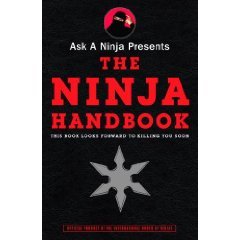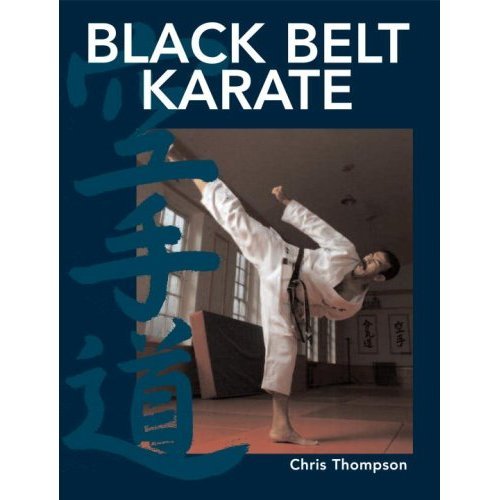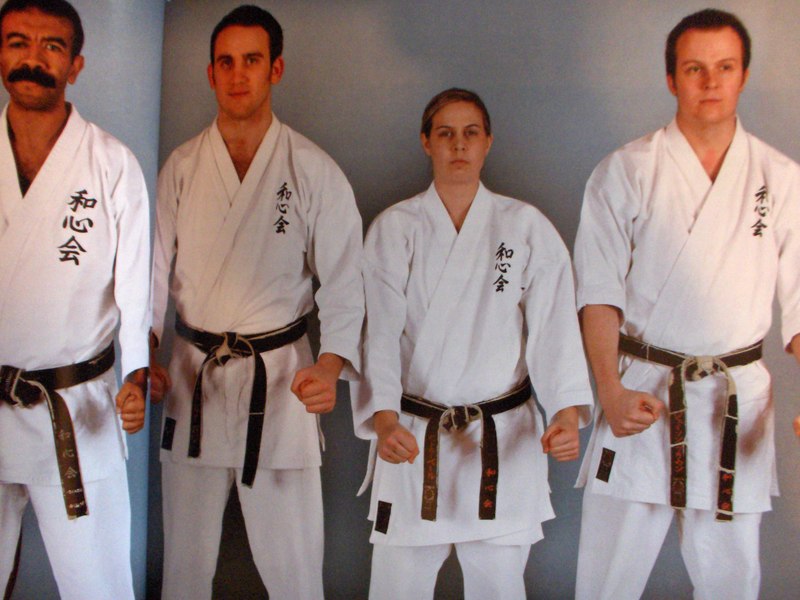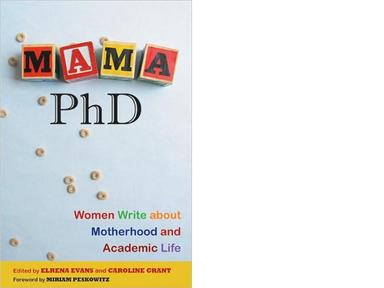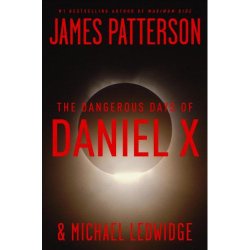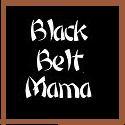Ask a Ninja Presents “The Ninja Handbook”
If you like the "Ask a Ninja" series online, then you don’t want to miss "The Ninja Handbook" by Douglas Sarine and Kent Nichols. This book has you laughing before it even gets started with a ninja will, just in case of the worst possible scenario. I don’t want to give it away but it’s a fill-in-the-blanks form that is just plain hysterical.
If you take this ninja business seriously, then you’ll appreciate the chapters telling one how to form a proper ninja clan and how to name that clan so as to be respected ninja folk. If you take the "Ask a Ninja" guy and squeeze his videos on to paper, you pretty much have the book.
Like the videos, "The Ninja Handbook" is full of sarcasm and dark humor that will have you laughing throughout. You better hurry up and read it fast though because like the videos, this book "looks forward to killing you soon" as well.
It takes a lot for a book to make me laugh out loud and that’s exactly what "The Ninja Handbook" does. If you are a fan of the internet ninja legend, then you don’t want to miss this book. There are humor infused chapters throughout.
One of the chapters on getting "ninjaish" details how to make your "mark" lose their way on a mission. "The Ninja Handbook" states:
. . .if your mark is stupid enough to be using a GPS system. Simply hack into the navigational program they are using and rewrite the algorithm from "shortest possible route" to "most round-about-and-ass-backward route possible. (75)
The book also provides some helpful insight to beginner ninja’s. Some of the suggestions are:
Replace all variations of hello in your vocabulary with head punches (43)
Get raving compliments about your great ideas and imput for at least 30 meetings or classes that you did not attend. Being a ninja is not about being there; it’s about having the impact of your presence felt whether you are there or not. (43)
Pick a fight with an inaminate object at least four times your body mass. (43)
This book is loaded with hysterical ninja training methods and with illustrations that are just as hysterical and useful. If you’re interested in picking up a copy for yourself (and trust me you’ll want to) go here. If you need more convincing and want to check out the ninja himself, go here and check out some of the videos.
For its laugh-out-loud humor and practical yet comical advice on becoming a "ninja," BBM gives the book. . .
![]()
Black Belt Karate
Chris Thompson attempts to tackle a tough question – "what does one do after black belt?" The two most frequent times for karateka to quit are early on (inside the first year), and right after they get their black belt. What’s missing from schools these days? Why is black belt seen as the end of the road?
Chris Thompson is an 8th degree black belt in the Wado-Ryu system. He is also the Chairman of the British Traditional Karate Association. I’m not entirely sure who he trained under, as his lineage is not readily available. Nevertheless, Thompson Sensei displays a great deal of knowledge regarding modern karate throughout this book.
I’d like to start off by saying that this book was a pleasure to read. Not at all heavy handed, as you might suspect. Thompson Sensei could have easily fallen into the trap of looking down upon readers who haven’t pursued the martial arts properly, but he opts to keep things light and informative.
Here is a peek at the kind of content you’ll receive:
1. Introduction to Karate – history, styles, basics…the standard affair.
2. Fundamentals – etiquette, stretching, waza, makiwara, kata, and drills.
3. Competition – rules, regulations, titles, guidelines.
4. Reference – how to tie your belt, term glossary, other odds and ends.
Each section is presented in very digestible chunks, and could easily be referred back to should a student need a quick reference guide for the topics involved.
I think my favorite part of the book is the sample self defense techniques that are shown. Rather than just showing a frame by frame example of kata, Thompson shows how certain techniques can be utilized in a self defense fashion. These insights are valuable for beginner and black belt alike.
Here is a pet peeve of mine though. Check out this picture from the book:
I have no personal problem with anyone in the picture and I am sure they are all skilled martial artists. But here is the thing – Thompson’s assistants probably have about 10-15 years experience. 20 at the most. Why do their belts have 40 years worth of wear and tear on them? Their belts are even more worn out than their instructors! One of two things could have happened here:
1. They bought a brand of black belt that intentionally skimps on the stitching, therefore making it easier to show wear.
2. They placed these belts in a giant rock tumbler.
Again, I have no problem with these practitioners. But what they have done is committed a faux pas against the concept of sabi. Sabi is an appreciation for that which is old. Objects in our everyday lives exude sabi when they have developed a unique character all their own do to use and age.
Black belts are one of the best examples of the natural growth of sabi. As a belt becomes worn from practice, it becomes more beautiful and valuable in the eyes of traditional martial artists. Having a belt that shows premature sabi sticks out as badly as a tiny man wearing a very oversized coat. Something just isn’t right.
But let’s place my grouchiness aside! The pictures themselves are very well made and serve to illuminate the techniques involved. Thompson found a good balance of using pictures to enhance the content without overpowering it.
my one true concern about this book is its main concept – helping students progress past black belt into the fog beyond. The topics covered in these chapters are all very valuable, but still basic. Technique combinations…tournament rules…historical snippets…these are things that students should be working on UP to black belt. Beyond that, there should be a discussion of mind and spirit alongside physical movements.
Furthermore, there isn’t mention of truly important concepts like distancing, timing, zanshin, and all that other good stuff which separates one black belt from another. Sure, it shows maturity if you know how to behave at a tournament, but in my mind, it doesn’t reach for the high heights that martial arts mastery should shoot for.
Ultimately, I think this book is very useful…but falls far short of its implied goal. Perhaps if this were listed as a guide for intermediates rather than advanced students, I would be on board. But since it seems to get caught in base-level land, I would recommend other books for practitioners really looking to dive deeply into karate.
Ikigai108 gives Chris Thompson’s Black Belt Karate…
If you’d like to purchase a copy, click here.
Noodleboro Learning to Listen Pizza Palace Game
My son has a habit of answering me when he’s not really listening. He somehow hears what I ask, answers one of the options I have provided, then promptly freaks out when I hand him the milk he said he wanted, or the tortilla chips, or the shoes, etc. I kind of thought this behavior wouldn’t start occurring until he was at least an adolescent. Not so.
Hasbro has created series of games set to address the listening issue, as well as other issues that challenge children. Thank you!!!! The Learning to Listen Pizza Palace game is a blast! My son was excited to sort out the pieces and begin playing. The game includes the parts of the game, as well as a book and a CD to enhance play. My son loved the pizza boxes and silly toppings. While he did stray a bit from the directions (instead of placing the pizza order, we had a full-blown delivery service), he followed the concept of listening in order to get the correct pizza toppings on the pizza. I thought it was exciting to see where his imagination went after starting to play the game. And frankly, I didn’t think he was listening to my pizza order, but he was and did a great job baking my pizza and delivering it in 30 minutes or less!
There are two other versions of the games…Learning to Share and Learning About Manners. This game was such a hit in our house, I will definitely be seeking out the Learning about Manners game. Boy do we need help with that! You can actually enter to win one of 200 games that Hasbro is giving away. And if you don’t win it there, you can get this game in stores already.
Add this game to your holiday shopping list! I give this game a:
![]()
Mama PhD
When I started graduate school for a Masters in Literature, I was working my first career in retail management. I was working 60+ hours a week managing a high-end shoe store. I was on my feet all day in very cool shoes, dealing with spoiled, rich women and making not much more than minimum wage. While this job was, in fact, quite rewarding and a great foundation for all jobs I have had since, I looked forward to doing what I loved most-reading, studying, and discussing literature. I was proud of myself for working so many hours a day while taking two literature classes. (One semester, I had both the Victorian Novel and The Rise of the Novel (18th Century)-we read one novel per week and if you’ve read any Victorian or 18th novels, you know that this was an insane amount of reading to do!) While I couldn’t spend the time on campus I would have liked, I worked hard at my studies. But to my classmates, this wasn’t enough. They were all full-time students living off of their student loan money. They spent every day on campus, in the library, at the coffee shop, at the little dive bar down the street. I joined them when I could, but these times were rare. So, I was snubbed. I wasn’t "dedicated enough." Because I chose to live and study in the real world instead of the utopic and untouched world of the scholar, I was deemed not good enough, not smart enough, and not committed enough. While I dealt with this by feeling angry, in reality I was hurt and jealous.
What did I do? I finished my Masters and instead of moving onto the doctoral program, I began work on Masters in Secondary Education. Here I studied with others who worked full-time, were parents, and were still committed to being lifelong learners. Here I was accepted. Here is where I belonged. I have never regretted that decision, but at times, I am still infuriated that I was edged out because I supported myself outside of academia.
My story is not unusual. In Mama PhD: Women Write about Motherhood and Academic Life, I read essay after essay of similar experiences and feelings toward the wonderful world of higher education. In this collection of essays, women explore their role in educational institutions and their role as mothers. Overwhelmingly, the two don’t seem to mix. Many of these writers have made it work, but it hasn’t been easy. Others put their career first and got tenure, but have to give up the dream of having children. Most comment that the way colleges and universities are set up, as patriarchies, there is no room for women pursuing children, just women pursuing tenure. Scholarship. publications, and teaching duties are the only measurement for success.
At times, these essays enraged me… women who are mothers, the world’s best multi-taskers, are made to feel like failures because they choose to procreate. At times these essays inspired me…hearing the tales of those who have done it, who have laughed in the face of these archaic institutions and said, "screw you!" At times, it just made me sad that there even has to be this discussion.
This was a great collection of essays. Heartfelt and poignant personal tales of women, mothers and scholars. Some have chosen one role over the other and some manage both despite the opposition. All of these women inspire me for their candor. Over the past year I have often thought about going back to get that PhD. Mama PhD has proved that I can do this…and I’m thinking I just might.
Mama PhD: Women Write about Motherhood and Academic Life edited by Elrena Evans and Caroline Grant deserves a:
![]()
The Dangerous Days of Daniel X
I am not generally a reader of young adult literature. It takes a very good book for me to get interested and involved. When I agreed to review "The Dangerous Days of Daniel X" by James Patterson and Michael Ledwidge, I was skeptical about how much I would like it.
The book was written with the intent to interest boys in reading. Patterson has a 10-year old son and set out to excite him with his writing.
I’m be honest. I finished reading the first chapter or two wondering how much I could possibly get into this book. I like Daniel X,
the main character, immensely. He’s a sassy character who doesn’t take any nonsense. He’s likable from the start, but the story involved crazy alien things. I didn’t know how into crazy alien things I could get.
By the time I finished the 4th or 5th chapter, I was hooked. I didn’t care if there were crazy alien people. Daniel X was a character that I wanted to get to know better. I finished the book in only two nights of reading. It was one of those books that made me sacrifice sleep. When I was finished with the book, I felt like emailing Patterson and Ledwidge and asking when the next Daniel X book was scheduled to be released (I found out Fall 2009 and frankly, that’s too far away).
Boys will like this book; girls will like this book (and so will their parents). The chapters are short and manageable, extremely kid friendly. The only problem with the book is that each chapter entices you so much to read the next one that you just can’t put the book down.
If you’re looking for a book that mixes action with an extremely likable and fun character, "The Dangerous Days of Daniel X" is a book that you should read. To purchase the book, go here.
BBM gives "The Dangerous Days of Daniel X". . .
![]()


